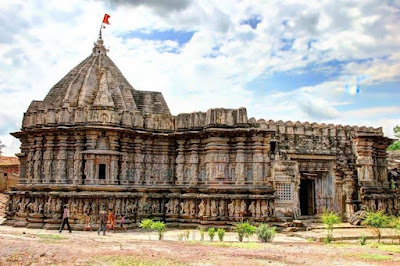Gujarat: A Land of Vibrant Culture and Rich Heritage
Gujarat, situated in the western part of India, is a state renowned for its rich history, vibrant culture, and remarkable contributions to the country's economic and industrial development. With a geographical area of around 196,024 square kilometers and a population of over 60 million people, Gujarat is the fifth-largest state in India. Let us delve into the various aspects of this captivating region, including its history, culture, economy, and tourism.
History:
Gujarat has a fascinating historical background that stretches back thousands of years. It was home to the great Indus Valley Civilization, one of the oldest urban civilizations in the world. The state has witnessed the rule of several dynasties, including the Mauryas, Guptas, Solankis, and Mughals. One of Gujarat's notable figures is Mahatma Gandhi, the father of the nation, who was born in Porbandar. The state played a pivotal role in India's struggle for independence and continues to cherish its legacy.
Culture:
Gujarat's culture is vibrant, diverse, and deeply rooted in tradition. The state is known for its colorful festivals, exquisite handicrafts, and captivating folk dances. Garba, a traditional dance form performed during the Navratri festival, is an iconic symbol of Gujarat's cultural heritage. The people of Gujarat are known for their warmth, hospitality, and entrepreneurial spirit. The state is also renowned for its lip-smacking cuisine, which includes dishes like Dhokla, Khandvi, and Undhiyu, among others.
Economy:
Gujarat boasts a robust and flourishing economy, making it one of the most industrialized states in India. It is often referred to as the "Growth Engine of India" due to its significant contributions to the country's economic development. The state's strategic location, well-developed infrastructure, and pro-business policies have attracted domestic and international investments across various sectors. Gujarat is a hub for industries such as textiles, petrochemicals, pharmaceuticals, agro-processing, and engineering. Its major ports, including Kandla and Mundra, contribute significantly to India's international trade.
Tourism:
Gujarat's diverse topography offers a plethora of attractions for tourists. The state is adorned with historical monuments, ancient temples, serene beaches, and wildlife sanctuaries. Ahmedabad, the largest city in Gujarat, is famous for its stunning architectural marvels like the Sabarmati Ashram and the intricate carvings of the Adalaj Stepwell. The Rann of Kutch, a vast salt marsh, is a must-visit destination known for its breathtaking landscapes and the vibrant Rann Utsav. Other popular tourist spots include the Gir Forest National Park, the only natural habitat of the majestic Asiatic lions, and the UNESCO World Heritage site of Champaner-Pavagadh Archaeological Park.
Infrastructure and Development:
Gujarat's commitment to development is evident in its well-planned infrastructure. The state boasts an extensive network of roads, airports, and ports, enabling smooth connectivity within and outside the state. The Gujarat International Finance Tec-City (GIFT City), located in Gandhinagar, is India's first international financial services center and a prominent symbol of the state's modern outlook. Additionally, Gujarat has made significant strides in renewable energy production, with the world's largest solar park, Charanka Solar Park, located in Patan district.
Education and Research:
Gujarat places great emphasis on education and research, fostering an environment conducive to learning and innovation. The state is home to esteemed educational institutions such as the Indian Institute of Management Ahmedabad (IIMA), National Institute of Design (NID), and the Gujarat Technological University.











































.jpeg)


.jpeg)





.jpg)

.png)
.png)
